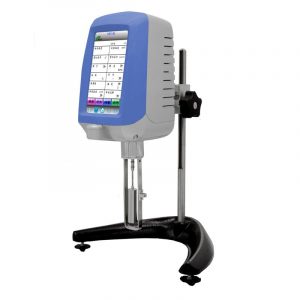Měření reologických vlastností keramické kaše
Měří se reologické vlastnosti keramické kaše, aby se vyhodnotilo její tokové chování a deformační charakteristiky během zpracování, construction and application. Ceramic slurry is usually composed of ceramic powder and liquid (such as water or organic solvent), and its rheological properties have an important impact on the performance and quality of ceramic products.
Rheological property
The following are some common methods and equipment used to determine the rheological properties of ceramic pasts:
Měření reologických vlastností keramické kaše
Viscosity measurement:
Viscosity is an important indicator of slurry fluidity. Common methods include rotary viscometers and cone-disc viscometers. Rotary visvisometers calculate viscosity by measuring the relationship between shear stress and shear rate formed by slurry around a rotating cylinder or sphere. The cone-disk visvisometer uses a conical disk with fixed spacing to measure the viscosity of the slurry.
Flow curve analysis:
Rheological curves can be drawn by measuring the flow behavior of slurry in response to changes in shear stress or shear rate. This can be done using a rotary rheometer or a shear shear meter. The rheological curves provide information about the shear stress, shear rate and viscosity of the slurry as a function of time and shear conditions.
Dynamic shear test:
Dynamic shear test is used to study the dynamic rheological behavior of slurry, including elastic modulus, storage modulus and loss modulus. This can be done using a dynamic Mechanics analyzer (DMA) or a frequency scan test.
Temperature dependence of rheological properties:
Similar to polymer pazes, the rheological properties of ceramic pazes may also change with temperature. The effect of temperature on slurry fluidity can be studied by conducting rheological tests at different temperatures.
These methods and devices can help evaluate key rheological properties such as viscosity, tekutost, shear dilution effect, shear thinning effect, and thixotropy of ceramic paths. According to the specific requirements and applications, the appropriate method can be selected to determine the rheological properties of ceramic slurry.
Měření reologických vlastností keramické kaše
Rheological meter
Rheometer is an optional instrument for the rheological determination of ceramic slurry. Choosing the right rheometer needs to consider several factors, including application field, zkušební požadavky, budget and laboratory conditions. Here are a few key considerations for choosing the right rheometer:
Test types and application areas:
The first step is to determine what type of rheological tests you will be performing and in what areas. Different rheometers may focus on different test types, such as viscosity determination, dynamic shear testing, temperature dependence testing, atd. Depending on your needs, choose a rheometer with the right test functions for your application.
Range of rheological parameters:
Determine the range of rheological parameters you need to test, such as shear rate, smykové napětí, frekvence, atd. Make sure the rheometer has enough range and sensitivity to meet your test requirements.
Sample capacity and adaptability:
Consider the sample size you typically use and the rheometer’s adaptability to sample size and type. Some rheometers may require large sample sizes and are suitable for batch testing of large samples, while others may be suitable for small sample sizes or samples requiring special shapes.
Měření reologických vlastností keramické kaše
Test accuracy and repeatability:
Understand the test accuracy and repeatability of the rheometer. Check the rheometer specifications and user reviews for performance and data accuracy. Especially for applications that require high accuracy and repeatability, it is important to select a rheometer with high accuracy.
Operations and Software:
Consider whether the rheometer’s operation and software interface are easy to use. The functionality and data processing capabilities of the rheometer software are also factors to consider.
Měření reologických vlastností keramické kaše
Based on laboratory budget constraints, determine the range of funds available and select the rheometer that fits the budget. It’s also important to focus not just on price, but on the balance between performance and quality.

